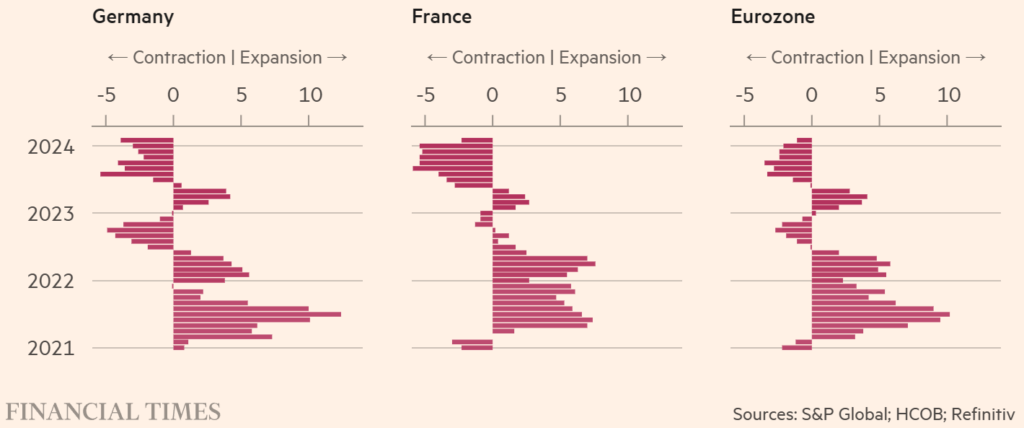The economic environment in Germany and the rest of the eurozone is complex, with both difficulties and opportunities. This synthesis aims to assess recent developments, including the German economy’s challenges, larger eurozone dynamics, and the labor market’s resiliency in the face of economic uncertainty.
The German economy is under pressure, with the Bundesbank forecasting additional shrinkage in the first quarter of this year. Uncertainty about government policy, transportation strikes, and weak consumer and industry demand are all contributing factors to the slump. Despite recent setbacks, I foresee a steady rebound fueled by dropping gas costs, decreased inflation, and healthy wage growth.

While Germany’s economy declines, the eurozone as a whole shows indications of stability. S&P Global’s composite purchasing managers’ index shows a moderate increase, with Germany serving as a brake on growth. Despite the problems, there is cautious optimism, fuelled by softening reductions in new orders, increasing hiring, and a more positive outlook.

Against the backdrop of economic uncertainty, Germany’s labor market appears as a beacon of stability. Despite the country’s economic troubles, the Federal Employment Agency is optimistic about the sector’s resiliency, noting a tight labor market with 1.7 million openings and a continuing skills deficit. While some big corporations have announced job losses, the general labor market outlook is encouraging, with possibilities for qualified individuals.
However, obstacles remain, particularly for unskilled individuals at risk of long-term unemployment. Demographic trends and a potential skills deficit highlight the need for proactive actions to maintain workforce growth. Germany’s reliance on foreign labor is anticipated to grow, prompting measures to recruit talent from elsewhere.
To summarize, the German and eurozone economic narratives are ones of perseverance in the face of hardship. While obstacles persist, there are reasons to be cautiously optimistic, particularly about the labor market’s ability to weather economic storms. Moving forward, proactive actions to address skill shortages and demographic transitions will be critical to guaranteeing long-term economic development and prosperity.